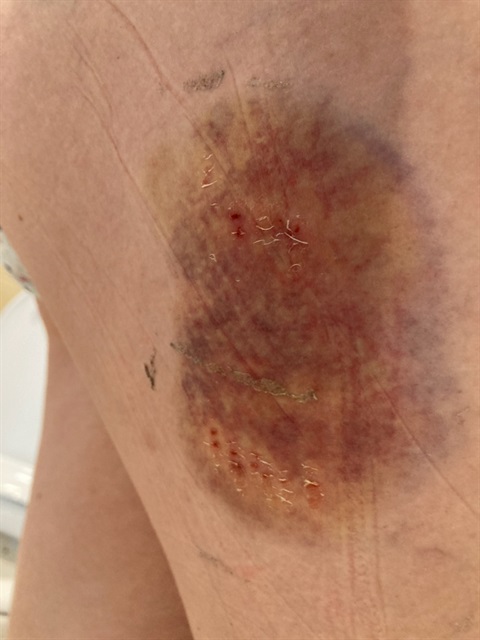Public Help Sought Over Dog Attack at Moonee Creek Reserve
Published on 02 February 2022

UPDATE (4/2/2022):
Thanks to information supplied by the public we were able to find the owners. Having spoken to them about the options and their own concerns for family and community safety, they chose to have the dog put down rather than opting for a strict control order.
Original Media Release:
Council’s Rangers are asking for help in identifying a dog involved in an attack that has left a woman with bites on her leg and hand.
According to the victim and her family, the attack happened on the creek shore at Moonee Creek Reserve near the children’s playground on Sunday 30 January around 1.30pm.
A dog, described as a brindle-coloured, cross-bred, male American Staffordshire Bull Terrier, bit a woman on the back of her thigh as she paddled with her sons in ankle-deep water.
It then lunged towards a toddler and the woman that it had bitten - concerned that it could maul the child - intervened by kicking at the dog and was again bitten on the hand. The bites required medical attention.
The dog was on a lead held by a woman thought to be in her 40s with tattoos on her arms and legs who was unable to control the animal. During the attack, the woman called the dog Oscar.
Bystanders came to the aid of the victim and shortly afterwards the woman with the dog left the reserve with a female companion in a white SUV driven by a man.
“This was a nasty attack by a dog that was actually on a lead, but not under any effective control,” said Gordon Polkinghorne, Council’s Team Leader Rangers/Animal Shelter.
“We gather that there were a lot of people at the reserve at the time of the incident and we’re hoping that they will get in touch and provide us with information or photos that can help us identify the dog so we can take appropriate action.
“Please call us on 6648 4000 or email us on coffs.council@chcc.nsw.gov.au”
Anyone who is ever attacked or witnesses a dog attack is encouraged to contact Council with as many details as possible. These could be:
- The time, place and date;
- Description of the dog, whether it has a collar and any name used;
- Description of owner, age, build, identifying features;
- Car description, registration; and
- Any photos.
“Even if the dog or owner can’t be identified from what you can provide after an incident, it’s worth reporting as we may get further information from other people that will help us take action,” added Mr Polkinghorne.